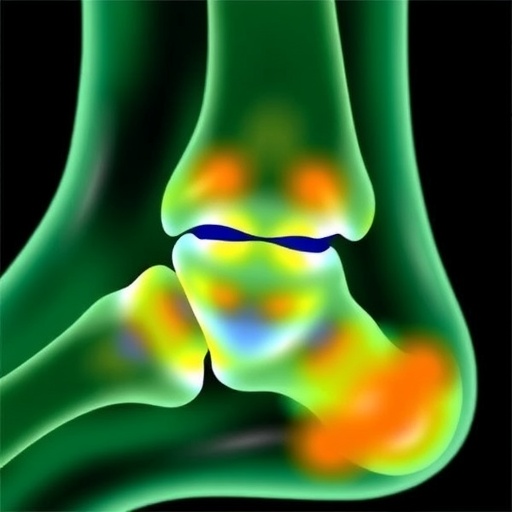
The corticosteroid Deflazacort has emerged as an important therapeutic option in managing various inflammatory conditions, showcasing not only its effectiveness but also its unique therapeutic index compared to other corticosteroids. Historically, corticosteroids have been a cornerstone in the treatment of conditions such as asthma, rheumatoid arthritis, and many autoimmune diseases, but their side effects can often limit their long-term use. The research by Parente illuminates the nuances surrounding Deflazacort, presenting a compelling case for its use in clinical practice.
Corticosteroids work by mimicking the effects of hormones produced by the adrenal glands, primarily influencing inflammation and immune function. They modulate the body’s natural responses, leading to reduced swelling, pain, and inflammation. However, the challenge remains in finding a balance between efficacy and safety — a key area where Deflazacort shows promise. Parente’s investigation into the therapeutic index highlights that Deflazacort possesses a wider safety margin compared to its counterparts, potentially allowing for higher doses with a reduced risk of adverse effects.
The relative potency of Deflazacort has also been a focal point in the literature, particularly regarding its comparison to more commonly prescribed steroids such as prednisone. Understanding the relative potency is crucial for clinicians when transitioning patients from one corticosteroid to another, and Parente’s findings provide vital insights. It becomes evident that while equivalent doses are critical for treatment regimens, the actual experience of patients can vary considerably based on the specific steroid used and its associated side-effect profile.
In terms of pharmacokinetics, Deflazacort is rapidly metabolized by the liver into its active form, which may contribute to its favorable profile compared to other corticosteroids, whose metabolites might linger in the body longer, increasing the potential for side effects. The pharmacodynamics of these drugs further elucidate how they exert their therapeutic effects at the cellular level, providing essential context for healthcare providers to make informed decisions regarding treatment plans.
Patients often face a conundrum when it comes to choosing a corticosteroid therapy: the need for rapid symptom control weighs against the potential for significant side effects such as weight gain, osteoporosis, and metabolic disturbances. This reality underlines the necessity for thorough patient education and shared decision-making practices. As per Parente’s research, Deflazacort may be better tolerated, analyzing not just clinical efficacy but quality of life outcomes for patients undergoing treatment.
The implications of these findings reverberate through multiple therapeutic areas. For instance, in pediatric populations where chronic corticosteroid use can significantly impact growth and development, the relative safety of Deflazacort becomes paramount. The delicate balance of managing conditions like Duchenne muscular dystrophy — a genetic disorder that causes progressive muscle degeneration — underscores the real-world importance of selecting an appropriate steroid.
A noteworthy aspect of corticosteroid therapy, including Deflazacort, is the potential for drug interactions. This is a crucial consideration, particularly in elderly patients or those receiving complex medication regimens. Clinicians must be acutely aware of how Deflazacort interacts with other medications, as these interactions can complicate both the effectiveness of treatment and the risk of side effects, an area that warrants more comprehensive studies.
As research continues to unfold on corticosteroids, the future likely holds novel formulations or delivery mechanisms intended to enhance efficacy while minimizing side effects. Intriguingly, the development of adjunct therapies that support or enhance the action of Deflazacort could pave the way for more personalized medicinal approaches, potentially revolutionizing the standard care protocols currently employed.
Interestingly, new data push the boundaries of traditional corticosteroid use by exploring their roles in managing not just inflammatory diseases but also other conditions such as cancer and fibrosis. With ongoing clinical trials, the anticipation surrounding Deflazacort’s broader applications grows, emphasizing the importance of continued investigation into both its therapeutic benefits and its complex pharmacological profile.
The public’s interest in medications like Deflazacort is fueled by broader conversations about medication safety and efficacy, particularly in the wake of rising concerns over opioid dependence and the side effects of long-term non-steroidal anti-inflammatory drug (NSAID) usage. Such discussions highlight the need for a shift towards leveraging medications with advantageous risk-benefit profiles, such as Deflazacort, as potential first-line therapies in many cases.
Ultimately, Parente’s research shines a light on an essential aspect of modern medicine: the evolution of treatment paradigms towards more individualized care. Through rigorous examination of therapeutic indices, relative potencies, and drug interactions, solutions like Deflazacort exemplify the possibility of optimizing patient care strategies within the evolving landscape of pharmacotherapy.
As healthcare continues to advance, the responsibility of practitioners to stay informed about emerging research is paramount. With the insights offered through studies like Parente’s, the move toward implementing safer, more effective corticosteroids like Deflazacort can significantly enhance patient outcomes and transform treatment landscapes moving forward.
With upcoming research initiatives emphasizing personalized medicine, the future of corticosteroid therapy, exemplified by Deflazacort, may hold the key to unlocking significant advancements in both the fields of pharmacology and complex patient care practices.
In conclusion, the journey of understanding and utilizing corticosteroids like Deflazacort encapsulates a critical intersection of science, clinical practice, and patient advocacy. It highlights the ongoing challenges medical professionals face while navigating the waters of effective inflammation management. As more research emerges, it will increasingly pave the way for improved treatment protocols that prioritize patient safety without compromising therapeutic efficacy.
Subject of Research: Deflazacort’s therapeutic index and relative potency compared to other corticosteroids.
Article Title: Deflazacort: therapeutic index, relative potency and equivalent doses versus other corticosteroids.
Article References:
Parente, L. Deflazacort: therapeutic index, relative potency and equivalent doses versus other corticosteroids.
BMC Pharmacol Toxicol 18, 1 (2017). https://doi.org/10.1186/s40360-016-0111-8
Image Credits: AI Generated
DOI: 10.1186/s40360-016-0111-8
Keywords: Deflazacort, corticosteroids, therapeutic index, relative potency, pharmacokinetics, side effects, pediatric use, drug interactions, pharmacodynamics, personalized medicine.
Tags: asthma management with Deflazacortautoimmune disease treatmentsclinical implications of Deflazacortcorticosteroid comparisonDeflazacort therapeutic indexeffective dosing strategiesinflammatory condition managementlong-term corticosteroid userelative potency of Deflazacortsafety profile of corticosteroidsside effects of corticosteroidstransitioning patients between corticosteroids




